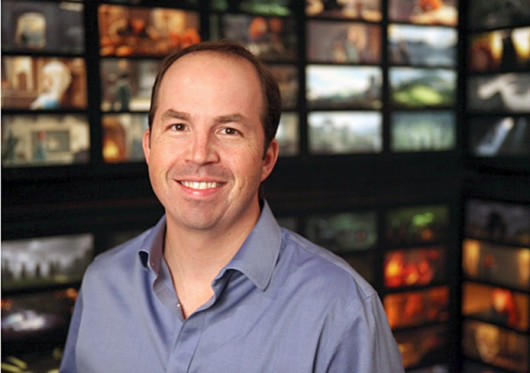
OSU alumnus Steve May, who currently works as the chief technology officer and supervising technical director at Pixar Animation Studios.
Credit: Courtesy of Deborah Coleman
Figuring out a life plan was easy for Ohio State alumnus Steve May.
“In high school, I kind of figured out that was what I wanted to do,” said May, chief technology officer and supervising technical director at Pixar Animation Studios. “I was very passionate about arts and science, I wanted to do something that was both. There (aren’t) many things that combine them heavily and computer animation is one that does.”
Wayne Carlson, May’s primary Ph.D. adviser in 1998 and boss at the Advanced Computing Center for the Arts and Design, now vice provost of Undergraduate Studies and dean of Undergraduate Education, met May when May was in high school and saw his potential.
“I used to be part of a private company in Columbus that was engaged in computer animation. Steve was a high school student from Cleveland and his dad brought him down for a tour of our company,” Carlson said. “He really became enthralled with one of the faculty (at OSU), who was also part of our company… and made the decision he was going to come to Ohio State and do work in computer animation.”
Carlson said during his time at OSU, May excelled as a student.
“He was focused, he was very deliberate, he did everything he asked of him and more,” Carlson said. “I have to say, as an undergraduate, he took all the formal graduate courses that we had available. When he then graduated and went into graduate school, he had already taken all the courses so we had to do independent studies for him so he could meet the requirements for the department. That really spoke about his character.”
May received his bachelor’s degree in 1990, master’s in 1992 and Ph.D. in 1998 in computer information science. He was a member of the research faculty ACCAD at OSU, where he taught computer animation and computer graphics. Shortly after his work at OSU, he began his career at Pixar.
In July 1998, May began his tenure at Pixar Animation Studios as the shading and modeling technical director on “Toy Story 2,” working on characters such as plastic penguin Wheezy and Andy’s dog, Buster. He started working on Pixar’s next film, “Monsters, Inc.,” as the simulation and effects sequence supervisor and helped create the fur and overall look for Sully, which May said was exciting.
“(The fur) was something we had never done before and it was a very high profile thing to work on a character like that,” May said.
May worked on other films such as Golden Globe-winner “Cars,” Academy Award-winning “Finding Nemo” and Academy Award-winning feature film “Up.”
May talked about some of the work he did for the making of “Up.”
“On ‘Up,’ 10 of us got to go on this great research trip to Venezuela to do research on the location we wanted Carl and Russell (the two main characters in the film) to travel to, so we spent two weeks either on top of the mountains of Venezuela or down in the rain forests,” May said. “Each of the movies has different, fun aspects to it.”
May became the supervising and technical director for the final shot production of Disney Pixar’s most recently released feature film, “Brave,” which details a Scottish princess’ journey to break gender stereotypes.
“‘Brave’ was really a rewarding film to work on, it was fun. It did have a female character as the main heroine, which was exciting,” May said. “It had a different style story to it that we had never seen before and had a visual look that was unique. We really tried to make the movie have the same feel as a lot of parts of Scotland had.”
Madeleine Harwig, a third-year in business, said she enjoys Pixar films and thought the animation work was excellent.
“(The animators) did a good job. I don’t like most of the cartoon-like work these days and I liked all of (Pixar’s films),” Harwig said. “I liked the shark characters in ‘Finding Nemo’ and I think it was a good message to make them all so different.”
Carlson added that getting into the field of computer animation was not easy, but May proved himself to be a great asset to Pixar.
“Steve did more than the technical stuff that was associated with (the animation),” Carlson said. “He learned the leadership skills, design skills and he learned how to interact with people to the point where he became more valuable to the company to be a permanent employee than a freelance employee.”


